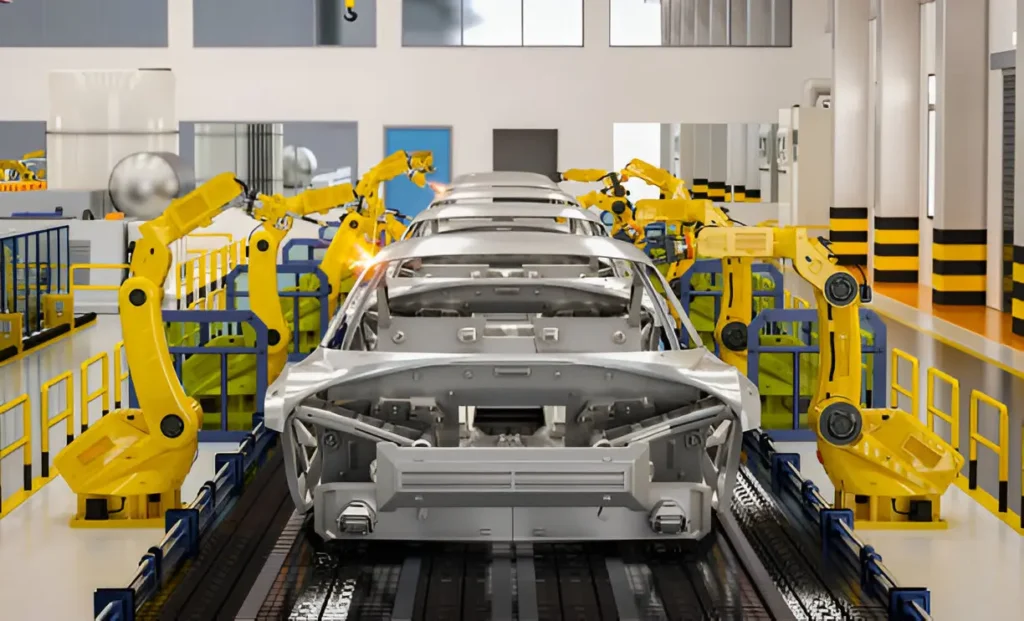High-volume automotive production demands precision, efficiency, and seamless coordination across multiple manufacturing stages. With global vehicle production reaching over 80 million units annually, manufacturers face mounting pressure to streamline operations while maintaining quality standards. The difference between success and failure often lies in how effectively companies optimize their production processes.
Modern automotive manufacturers who master streamlined processing gain significant competitive advantages, including reduced production costs, faster time-to-market, and improved product quality. This article explores five essential strategies that leading automotive companies use to achieve exceptional efficiency in high-volume production environments.
1. Implement Advanced Automation and Robotics
Automation represents the backbone of modern high-volume automotive production. Leading manufacturers integrate sophisticated robotic systems throughout their production lines, from initial material handling to final assembly processes. These systems operate with remarkable precision, completing tasks in seconds that would take human workers several minutes.
Ford’s Dearborn plant exemplifies this approach, utilizing over 700 robots that work alongside human operators to produce F-150 trucks. The facility achieves production rates of up to 1,200 vehicles per day while maintaining consistent quality standards. Automated systems excel particularly in repetitive tasks such as welding, painting, and parts installation, where consistency and speed are paramount.
The integration of collaborative robots (cobots) has revolutionized production flexibility. Unlike traditional industrial robots that require safety barriers, cobots work safely alongside human operators, adapting to production changes in real-time. This flexibility proves invaluable when manufacturers need to switch between different vehicle models or accommodate design modifications without significant downtime.
2. Optimize Material Flow and Supply Chain Integration
Efficient material flow forms the foundation of streamlined automotive production. Manufacturers achieve optimal results by implementing just-in-time (JIT) delivery systems that synchronize material arrivals with production schedules. This approach minimizes inventory holding costs while ensuring production lines never experience material shortages.
Toyota’s production system demonstrates the power of integrated supply chain management. The company coordinates with suppliers to deliver components in precise quantities at exact times needed for production. This coordination extends to steel coil processing for automotive industry applications, where specialized processing ensures materials meet exact specifications before entering the production line.
Modern manufacturers leverage digital twin technology to simulate and optimize material flow patterns. These virtual replicas of production facilities allow engineers to identify bottlenecks, test process improvements, and predict potential disruptions before they impact actual production. Companies using digital twin technology report up to 25% improvements in production efficiency and significant reductions in waste generation.
3. Deploy Predictive Maintenance Programs
Equipment downtime represents one of the most significant threats to high-volume production efficiency. Unplanned maintenance events can halt entire production lines, resulting in lost productivity and missed delivery deadlines. Predictive maintenance programs address this challenge by using sensor data and advanced analytics to predict equipment failures before they occur.
General Motors implemented a comprehensive predictive maintenance program across its manufacturing facilities, achieving a 20% reduction in unplanned downtime and $50 million in annual cost savings. The program uses machine learning algorithms to analyze vibration patterns, temperature fluctuations, and other operational parameters to identify potential equipment issues weeks before they would cause failures.
Internet of Things (IoT) sensors play a crucial role in modern predictive maintenance systems. These devices continuously monitor equipment performance, collecting data on factors such as operating temperature, vibration levels, and energy consumption. When combined with artificial intelligence algorithms, this data enables maintenance teams to schedule repairs during planned downtime periods, maximizing production availability.
4. Establish Continuous Improvement Culture
Streamlined processing requires ongoing optimization efforts that engage employees at all organizational levels. Manufacturers who successfully implement continuous improvement cultures empower workers to identify inefficiencies and propose solutions. This grassroots approach to process optimization often yields significant results because frontline employees possess intimate knowledge of day-to-day operational challenges.
Lean manufacturing principles provide the framework for systematic continuous improvement. These methodologies focus on eliminating waste in all forms, including excess inventory, unnecessary motion, waiting time, and defective products. Companies implementing comprehensive lean programs typically achieve 15-20% improvements in productivity within the first year.
Kaizen events represent one of the most effective tools for driving rapid improvements. These focused improvement sessions bring together cross-functional teams to solve specific production challenges within compressed timeframes. Successful kaizen events often generate multiple improvement ideas that can be implemented immediately, creating momentum for ongoing optimization efforts.
5. Leverage Data Analytics and Real-Time Monitoring
High-volume production generates vast amounts of operational data that manufacturers can analyze to identify optimization opportunities. Advanced analytics platforms process this information to reveal patterns, trends, and correlations that might not be apparent through traditional monitoring methods. Real-time monitoring systems enable immediate responses to production variations, preventing minor issues from escalating into major problems.
Manufacturing execution systems (MES) serve as the central nervous system for data-driven production optimization. These platforms integrate information from various production systems, providing comprehensive visibility into manufacturing operations. MES platforms enable manufacturers to track key performance indicators in real-time, including overall equipment effectiveness (OEE), cycle times, and quality metrics.
Machine learning algorithms enhance traditional analytics by identifying subtle patterns in production data that human analysts might miss. These systems can predict quality issues based on process parameters, optimize production schedules to minimize changeover times, and recommend process adjustments to improve efficiency.
Streamlined processing in high-volume automotive production requires a holistic approach that combines advanced technology, optimized processes, and engaged personnel. Manufacturers who successfully implement these five strategies position themselves for sustained competitive advantage in an increasingly demanding marketplace. The key to success lies in viewing these strategies as interconnected elements of a comprehensive production optimization system rather than isolated improvement initiatives.



